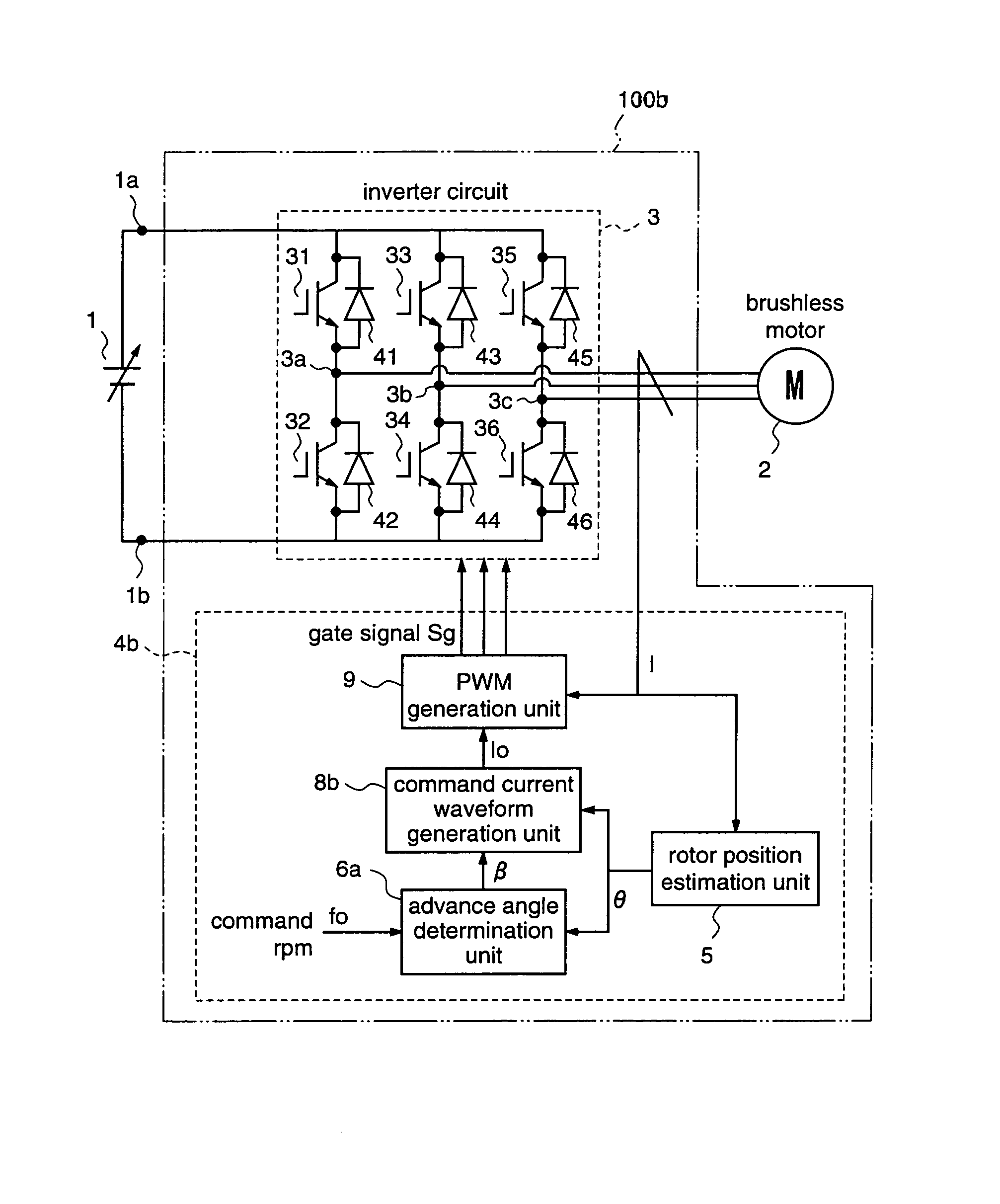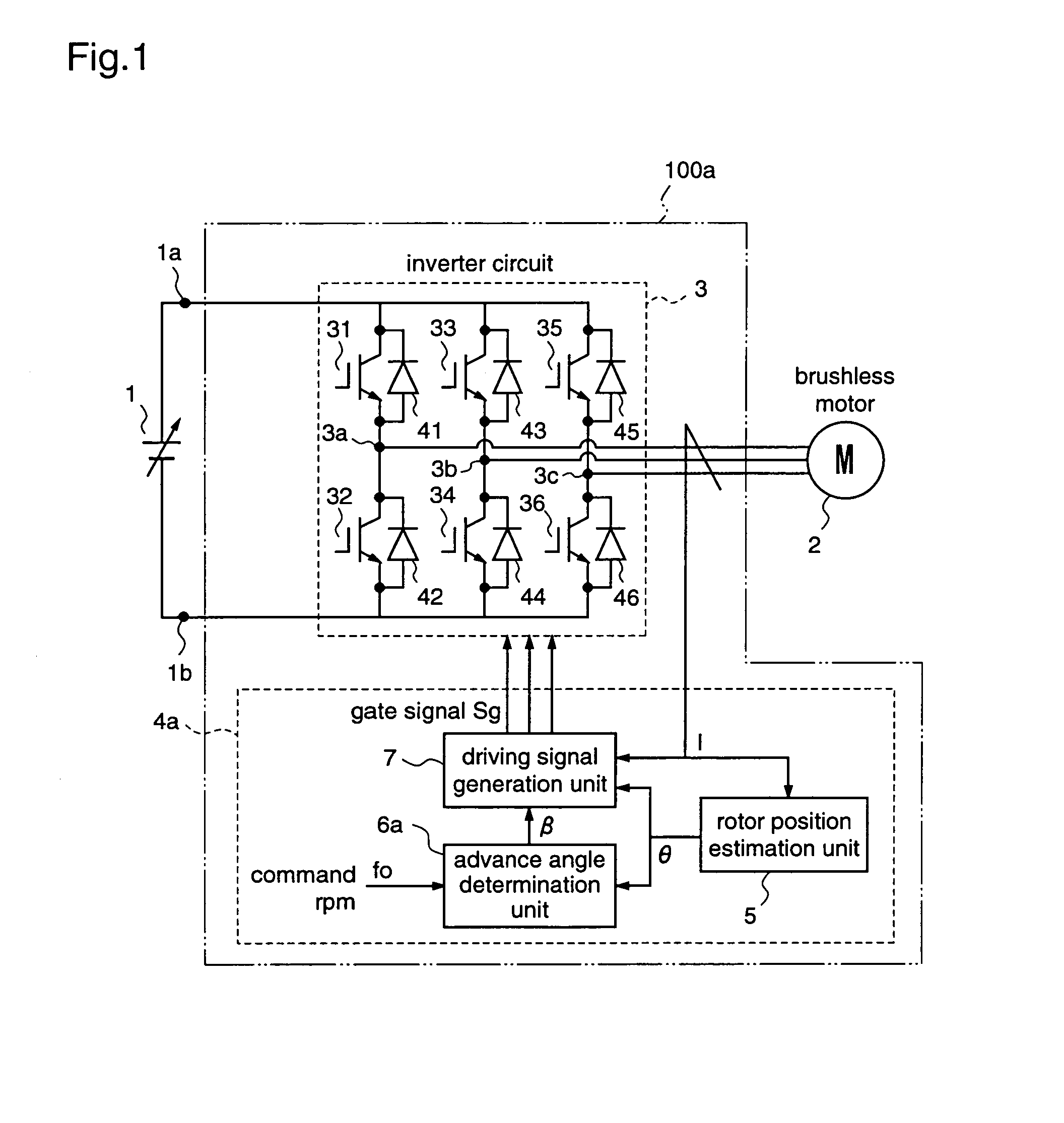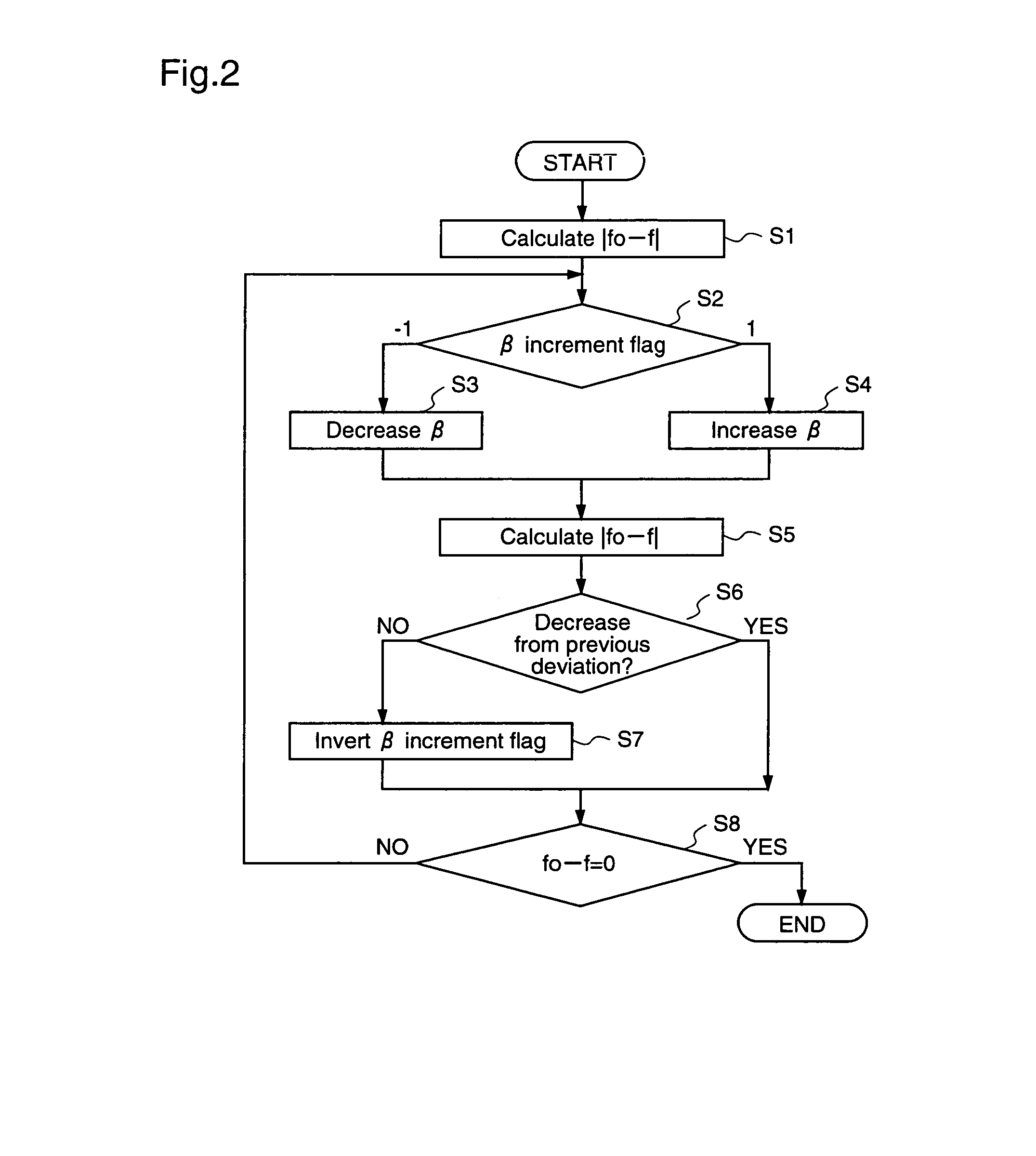Motor driving apparatus
a motor and motor technology, applied in the direction of electronic commutators, domestic cooling devices, dynamo-electric converter control, etc., can solve the problems of reduced motor driving efficiency, excessively large or small weak field current id, and brushless motors cannot be driven at higher rpm, so as to achieve simple and stable weak field control, reduce cost, and high degree of freedom in design
- Summary
- Abstract
- Description
- Claims
- Application Information
AI Technical Summary
Benefits of technology
Problems solved by technology
Method used
Image
Examples
embodiment 1
[0072]FIG. 1 is a block diagram for explaining a motor driving apparatus according to a first embodiment of the present invention.
[0073]A motor driving apparatus 100a according to the first embodiment has an input terminal connected to a power supply 1, and drives a brushless motor 2 at a required arbitrary rpm. The motor driving apparatus 100a performs weak field control for the brushless motor 2 by varying an advance angle β of a phase of a motor current with respect to a rotor position of the motor.
[0074]In this first embodiment, the advance angle β of the motor current is controlled so that a deviation between the command rpm to the motor and the actual rpm becomes zero. While in the prior art the control target in the weak field control is the weak field current Id, the advance angle β of the motor current according to the first embodiment and the weak field current Id according to the prior art are similar control targets in the weak field control.
[0075]Hereinafter, an inverte...
embodiment 2
[0111]FIG. 3 is a block diagram for explaining a motor driving apparatus according to a second embodiment of the present invention.
[0112]A motor driving apparatus 100b according to the second embodiment has an input terminal connected to a power supply 1, drives a brushless motor 2 at an arbitrary rpm, and performs weak field control for the brushless motor 2 by adjusting an advance angle β of a motor current, like the motor driving apparatus 100a according to the first embodiment. In this second embodiment, control of the advance angle β of the motor current is carried out so that a deviation between a command rpm fo supplied to the motor and an actual rpm f becomes zero, under the state where the amplitude of the current supplied to the motor is maintained at a constant value.
[0113]To be specific, the motor driving apparatus 100b comprises an inverter circuit 3 for converting an output voltage of the power supply 1 into a three-phase AC and outputting the three-phase AC to the mot...
embodiment 3
[0130]FIG. 5 is a block diagram for explaining a motor driving apparatus according to a third embodiment of the present invention.
[0131]A motor driving apparatus 100c according to the third embodiment has an input connected to the power supply 1, and drives the brushless motor 2 at an arbitrary rpm, like the motor driving apparatus 100b according to the second embodiment. Further, the motor driving apparatus 100c performs weak field control of the brushless motor 2 by adjusting the advance angle β of the motor current so that the actual motor rpm f becomes maximum.
[0132]To be specific, the motor driving apparatus 100c comprises an inverter circuit 3 for converting an output voltage of the power supply 1 into a three-phase AC and outputting the three-phase AC to the motor 2, and an inverter control unit 4c for controlling the inverter circuit 3.
[0133]The inverter control unit 4c supplies the inverter circuit 3 with a drive signal Sg so that the brushless motor 2 is driven at an rpm r...
PUM
 Login to View More
Login to View More Abstract
Description
Claims
Application Information
 Login to View More
Login to View More - R&D
- Intellectual Property
- Life Sciences
- Materials
- Tech Scout
- Unparalleled Data Quality
- Higher Quality Content
- 60% Fewer Hallucinations
Browse by: Latest US Patents, China's latest patents, Technical Efficacy Thesaurus, Application Domain, Technology Topic, Popular Technical Reports.
© 2025 PatSnap. All rights reserved.Legal|Privacy policy|Modern Slavery Act Transparency Statement|Sitemap|About US| Contact US: help@patsnap.com



